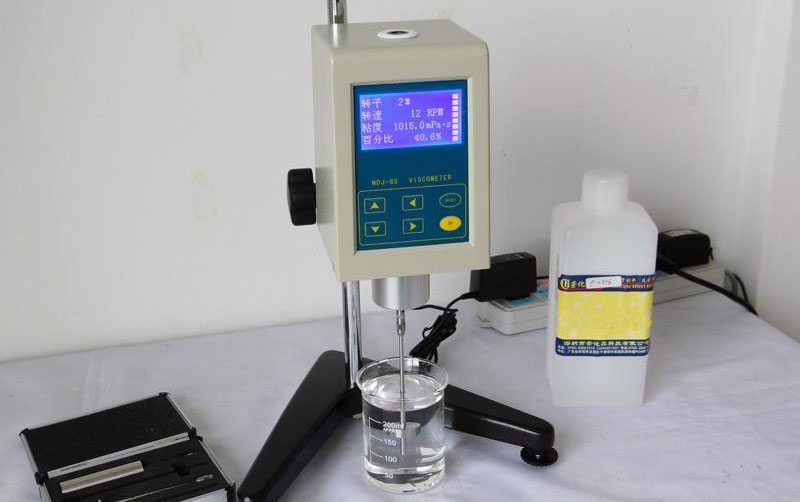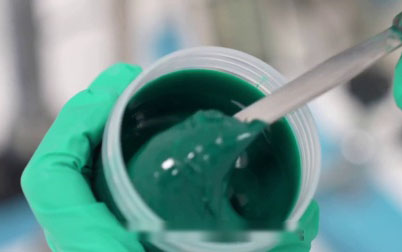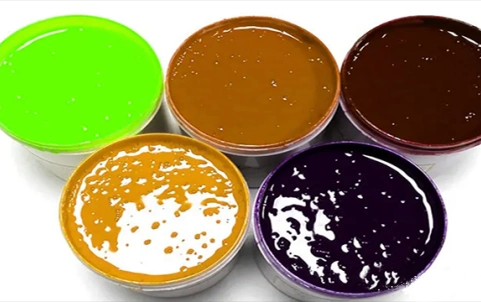The shift to automated production is a game-changer for the ink industry. It promises incredible speed, flawless consistency, and lower long-term costs. But many manufacturers discover a frustrating truth: automation doesn’t eliminate problems—it just changes them.
Instead of manual errors, you now face technical gremlins. A tiny fluctuation in viscosity, a bit of settled pigment, or a few stray bubbles can bring a high-speed line to a grinding halt. This costs you money in wasted materials, downtime, and missed deadlines.
The good news? These problems are not a life sentence. They are solvable. The key is understanding their root causes and integrating the right equipment designed for precision and stability. This article explores the most common ink headaches in automated production and how smart ink manufacturing equipment provides the cure.
Viscosity is the lifeblood of ink performance. It determines how ink flows, transfers, and ultimately, how it looks on the substrate. In an automated world, unstable viscosity is enemy number one.
The Problems You See:
Color Shifts: Even a small change in viscosity alters the ink film thickness applied by the anilox roll or print head. This leads to noticeable color differences from one batch to the next, which can be frustrating for clients.
Poor Transfer: Ink that is too thick won’t pump efficiently or transfer well. It can cause scraping, doctoring issues, and uneven coverage. Ink that is too thin can lead to misting (flying ink) and weak, washed-out colors.
Clogging: In inkjet printing, a rise in viscosity is a direct path to clogged nozzles and catastrophic printhead failure.
Why It Happens in Automated Tinting Systems:
Solvent Evaporation: This is the biggest culprit. Even in semi-closed systems, solvents evaporate from ink reservoirs and pipes, especially over long production runs. The ink becomes thicker and harder to manage.
Shear Thinning: Some inks (like many UV-curable inks) are thixotropic. Their viscosity decreases under mechanical stress—like being pumped or sheared by a mixer—and then slowly recovers when at rest. This constant change baffles automated systems.
Temperature Swings: Production halls are rarely perfectly climate-controlled. A cold morning makes ink thicker. Heat from pumps and motors can make it thinner.
The Solution: Precision Control with the Right Equipment
You cannot fix this with a manual cup and a stopwatch. You need closed-loop, real-time control.
Start with Perfect Formulation: Inaccuracy at the start magnifies down the line. An automated colorant dispenser is your first line of defense. These precision dispensing systems eliminate human error in measuring pigments, resins, and additives. They ensure every batch starts with the same formula, providing a stable viscosity baseline.
Implement Real-Time Monitoring: Integrate an inline viscosity controller into your main ink supply line. This device continuously measures viscosity and automatically adds small amounts of solvent to maintain a perfect, pre-set value. It’s a “set it and forget it” solution that guarantees stability 24/7.
Is inaccurate manual mixing costing you time and money? Explore our range of high-accuracy industrial ink dispensers designed for flawless batch-to-batch consistency.

Inks are complex suspensions. Heavier pigment particles have a natural tendency to separate from the lighter resin and solvent components. In a static tank, gravity always wins.
The Problems You See:
Color Inconsistency: The first part of a batch has one color; the end of the batch has another, as the pigment concentration changes. This makes achieving color matching a nightmare.
Gloss and Performance Issues: Settling doesn’t just affect color. Additives that control slip, gloss, and adhesion can also separate, leading to unpredictable product performance.
Filter and Nozzle Clogging: Settled pigment can form a hard “cake” at the bottom of a tank. When disturbed, these clumps break loose and travel downstream, quickly clogging filters and the microscopic nozzles of inkjet printheads.
Why It Happens in Automated Systems:
Automation often involves larger storage tanks and longer pipe runs. Ink can sit stagnant in these areas for hours, allowing settling to occur. Recirculation loops are good, but they often don’t create enough energy to re-disperse fully settled pigment.
The Solution: Never Stop Moving
The mantra to prevent settling is constant, gentle motion.
Powerful Pre-Dispersion: Before ink even enters the main production line, it must be perfectly dispersed. A high-shear mixer or high-speed disperser is essential here. It uses tremendous mechanical energy to break down pigment agglomerates and wet each particle thoroughly, creating a stable, uniform dispersion that is much more resistant to settling.
Tank Mixing Technology: Never let ink sit still in a storage tank. Use low-shear agitators or sidelong mixers in all holding tanks. These devices provide gentle, continuous movement that keeps all components in suspension without incorporating damaging air bubbles.
Optimized Circulation Design: Design your ink supply system with a “ring main” or constant circulation loop. This ensures ink is always moving from the tank to the application point, and back again, preventing stagnation in any part of the system.
The fight is settling for good! Our tank agitation systems and high-shear dispersion mixers provide the constant motion needed for perfect ink stability. Learn more.

Air is the invisible enemy of ink flow. Bubbles are compressible, and ink is not. This fundamental difference causes a world of trouble.
The Problems You See:
Print Defects: Bubbles in the ink cause pinholes, voids, and “fish eyes” on the printed surface, ruining print quality.
Inkjet Printing Failures: In continuous inkjet and drop-on-demand printers, bubbles are a disaster. They cause missing jets, misfiring, and unstable meniscus formation, leading to banding and unreadable codes.
Pump Cavitation: Bubbles entering a pump cause cavitation—the formation and collapse of vapor pockets. This damages pump internals, reduces pumping efficiency, and creates pressure fluctuations that further introduce air.
Why It Happens in Automated Systems:
Leaky Connections: Any small leak on the suction side of a pump will draw air into the system.
High-Shear Mixing: While necessary, introducing air during mixing is a risk. Vortexing in an open tank is a prime culprit.
Splash Filling: Pouring ink from a height into a reservoir traps air and creates foam.
The Solution: A Closed and De-Aerated System
The goal is to exclude air from the start and remove any that gets in.
Sealed Mixing and Handling: Always use closed-container mixing. A closed-loop mixing system allows you to blend and transfer inks without exposure to the open air. This is the single most effective way to prevent foam.
Smart Pump Selection: Choose pumps known for low-shear, gentle handling. Diaphragm pumps and certain peristaltic pumps are excellent choices as they are less likely to aerate the ink compared to high-speed centrifugal pumps.
De-Aeration Technology: For critical applications like inkjet, integrate a de-aerator module or degassing unit. These devices typically use a membrane that allows air to pass through but blocks the ink, pulling microscopic bubbles out of the solution before the ink reaches the printhead.
Bubbles killing your yield? Ask us about our closed-system ink filling machines and de-aeration technologies that protect your sensitive inks from air. <<

Downtime for cleaning is the biggest thief of productivity in automated plants. Preventing clogs and color contamination is paramount.
The Solution: Automated Cleaning and Precision Filling
CIP/SIP Systems: Clean-in-Place (CIP) systems are a must for modern ink lines. With the push of a button, cleaning solvents are automatically pumped through all pipes, tanks, and mixers, followed by a drying cycle. This eliminates human error in cleaning and prevents cross-contamination between batches. Sterilize-in-Place (SIP) takes it further for sensitive products.
Precision Filling for Packaging: The final step is packaging. An automatic ink-filling machine that uses bottom-up filling or weight-based filling technology ensures containers are filled accurately without splashing. This guarantees your customer receives the exact volume they paid for, with a perfect seal.
Maximize your uptime! Our automated filling systems with CIP can reduce cleaning time by up to 90% and eliminate the risk of cross-contamination. Request a demo!
Automation shouldn’t be a source of new problems; it should be the solution to old ones. By understanding the challenges of viscosity control, pigment stability, and air management, you can make smart investments in the right equipment.
The modern ink line is an integrated ecosystem. It starts with a precision dispenser, relies on high-shear mixers and agitators for stability, depends on viscosity controllers and de-aerators for quality, and is maintained by CIP systems and filling machines.
Investing in this integrated ink production equipment isn’t an expense—it’s a strategic move that pays for itself through less waste, higher quality, fewer customer complaints, and ultimately, a stronger competitive advantage.
Ready to Solve Your Production Problems for Good?
At SIGHTEC, we don’t just sell machines; we provide solutions. Our experts specialize in diagnosing issues in ink production lines and recommending the right mix of dispensing, mixing, and filling technology to create a seamless, efficient, and profitable operation.
Contact us today for a free consultation. Let’s discuss your specific challenges and build a system that brings perfect stability to your automated ink production.